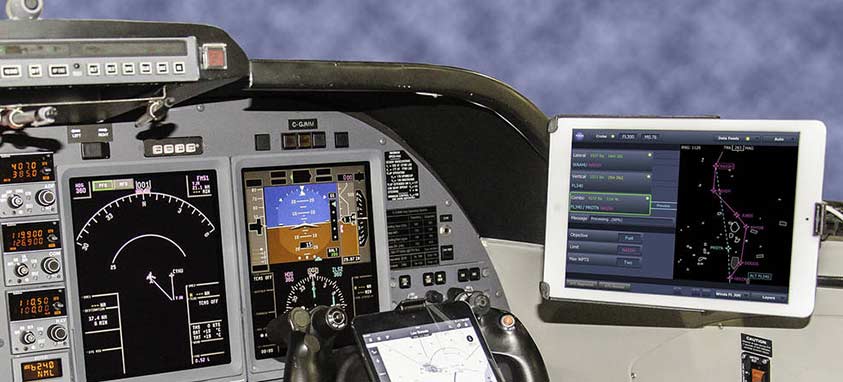Shorter flights and lower fuel consumption could soon be on the airline industry’s itinerary. NASA is testing software it has designed help aircrafts reduce flying time and carbon emissions. Over the next three years, Virgin America and Alaska Airlines will run a trial on the Traffic Aware Planner (TAP) application developed under the Traffic Aware Strategic Aircrew Requests (TASAR) project.
The new technology has potential to advance the aviation industry in a major way. NASA researchers believe that it will drastically reduce delays and environmental impacts while improving passenger comfort and safety, even with the growing demand for air travel.
TAP attaches to the aircraft’s information hub, reading current position, altitude, flight route and current information, explains David Wing, TASAR project lead at NASA’s Langley Research Center. Based on real-time feedback, the app discovers alternate routes and altitude changes that could save fuel or flying time—all displayed on a tablet for the flight crew to access. Researchers say that even four minutes less time on a single trip could provide substantial cost and time reductions. The benefits are even greater for long-haul flights.
“Up until now there has been no way to deliver comprehensive wind and congestion data to pilots in near-real time,” said Tom Kemp, Alaska Airlines’ vice president of operations. “TASAR is a ‘super app’ that will give our pilots better visibility to what’s happening now versus three hours earlier when the flight plan was prepared.”
The innovative app is also built with safety in mind. By accessing the airplane’s surveillance receiver, it analyzes nearby air traffic in order to avoid potential conflicts by offering substitute flight paths. As a result, air traffic controllers could more easily approve route change requests. If Wi-Fi is available in the cockpit, TAP can also detect current weather conditions, wind forecast updates and restricted airspace status for increased efficiency.
“This should help pilots and controllers work more effectively together and reduce workload on both sides from un-approvable requests. TASAR takes advantage of NASA’s state-of-the-art TAP software with flight information directly from the aircraft and the emerging infrastructure to help pilots get approved to fly the most efficient or time-saving trajectory possible,” said Wing.
The TASAR technology was already successfully tested twice during a flight from Virginia to Kentucky aboard a Piaggio P180 Avanti aircraft. Around a dozen pilots provided feedback on a simulated trial conducted at the University of Iowa Operator Performance Laboratory. TAP has been determined safe and ready for Federal Aviation Administration certification.




